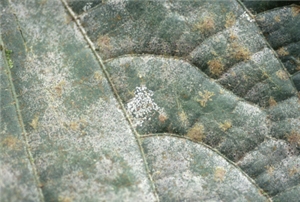Definition
An alga is a plant or plantlike organism of any of several phyla, divisions, or classes of chiefly aquatic usually chlorophyll-containing nonvascular organisms of polyphyletic origin that usually include the green, yellow-green, brown, and red algae in the eukaryotes and the blue-green algae in the prokaryotes.
Etymology. (plural), 1794, from alga (sing.), 1551, from L. alga "seaweed," of uncertain origin, perhaps from a PIE base meaning "to putrefy, rot ."
Discussion
Algae are prevalent in moist environments and shady areas. Some botanists believe that land plants evolved from primitive algae. The only known genus of plant-parasitic algae is Cephaleuros. Most algae in landscape or househjold sttings are conisdered to be unsightly pests. Many botanists believe that the modern land plants evloved from algae in oceans. Although most algae do not cause plant disease, when on leaves they can block or intercept photsynthetically active sunlight, thereby reducing photosynthesis.

